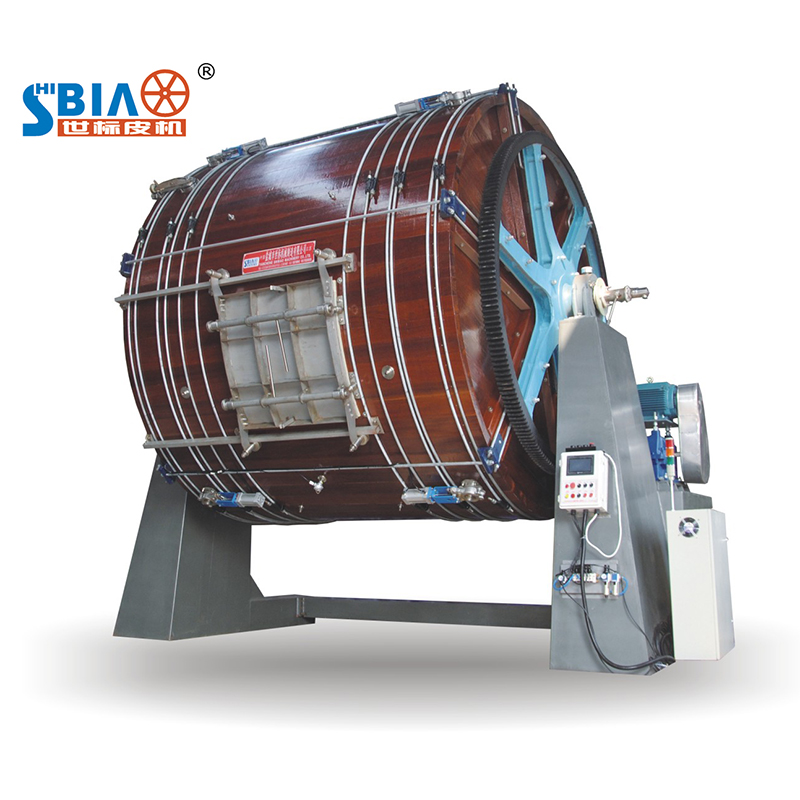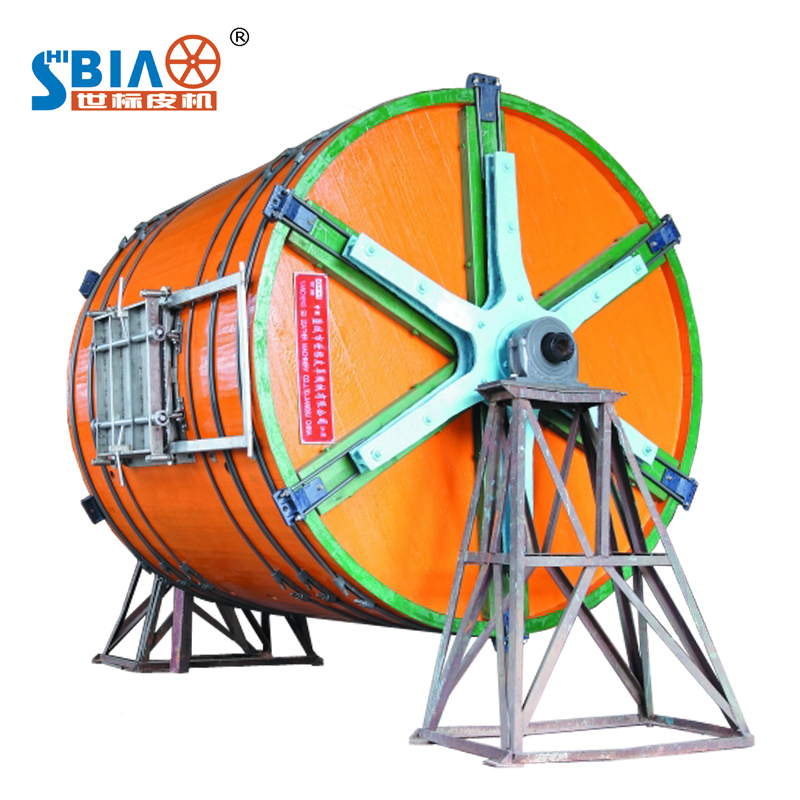The tanning process is a key step in leather manufacturing, and one of the key components of the tanning process is the use of tanning barrels. These drums are essential in the production of high-quality leather, and they play an important role in the piling operation, which is an important stage in the leather manufacturing process.

Tannery drums, also known as tannery machines, are large cylindrical containers used to treat animal leather and skin with tanning preparations to produce leather. These barrels are usually made of stainless steel or wood and are designed to rotate, allowing for a thorough and even distribution of the tanning agent on the leather. The use of tanning rollers is essential to achieve the desired properties of leather such as softness, flexibility and durability.
One of the key operations carried out in the tanning drum is the piling process. Piling is a mechanical operation that stretches and softens the leather by applying pressure and friction to it. The process is usually carried out in tanning barrels, where the leather is placed and subjected to controlled mechanical action. In the leather manufacturing process, the purpose of the gluing operation is to make the leather have specific characteristics and properties.
The piling operation serves several important purposes in the leather manufacturing process. First, it softens the leather by breaking down the fibers, making the material more pliable. This is key to ensuring that leather is comfortable to wear and can be easily shaped and molded into a variety of products such as shoes, bags and clothing. In addition, the stake process helps to improve the overall texture and feel of the leather, making it smooth and soft.
Piling plays a vital role in the uniformity of leather. By placing the leather under controlled pressure and friction in a tannery roller, the piling operation helps to eliminate any inconsistencies in the leather, resulting in a more even and consistent product. This is important to ensure that the leather meets the required quality standards and can be used in high-end applications.
In addition to softening and improving the texture of the leather, the piling operation also helps to enhance the natural texture of the material. By placing the leather under controlled mechanical action, the piling process can bring out the natural texture patterns and features of the leather, increasing its aesthetic appeal and visual appeal. This is especially important for premium leather products, where the natural beauty of the material is a key selling point.
The piling operation in the leather manufacturing process is essential to achieve the desired characteristics and properties of the leather. By using tannery rollers for this mechanical operation, manufacturers can ensure that the leather is soft, pliable, even, and visually appealing, making it suitable for a wide range of applications. Whether for fashion, upholstery or accessories, piling operations are a key step in producing high-quality leather that meets market demands.
Tannery drums play a vital role in the leather manufacturing process, and the piling operation is a key component of this process. By placing the leather under controlled mechanical action in a tannery roller, manufacturers can obtain the desired softness, texture, uniformity and visual appeal in the leather. This ensures that the leather meets the quality standards required for a variety of applications, making it an important step in the production of high-quality leather products.

Post time: Mar-25-2024

